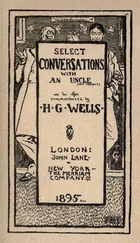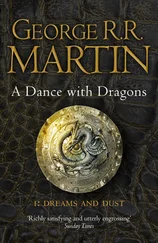It’s capoeira between us
Conversations with capoeiristas. Part 1
Natalia Korelina
Editor Kadia Parker
Illustration designer Ivan Kopylov
Cover designer Marina Sotnikova
© Natalia Korelina, 2021
ISBN 978-5-0053-6239-1 (т. 1)
ISBN 978-5-0053-6240-7
Created with Ridero smart publishing system
When I started this book, I had no idea what the result would be. My designs were ambitious – to collect interviews from people who, in their country or region outside of Brazil, influenced the course of capoeira’s history. Some of whom initiated this historic act, some have already become legends in the capoeira world, while others live quietly and do what they love.
Interviews per se, questions and answers, are not so interesting if the context is unknown. It would not be clear to me what questions to ask without context, and for you, dear readers, it would not be such an interesting read. Therefore, I decided to speak only with people:
– I know personally and who share similar vibe with Cordão de Ouro 1 1 Golden cord (Portuguese)
world.
– Who have several years of teaching experience in the country and have an actual capoeira group.
– Who are currently working with capoeira.
I needed this context to know what kinds of questions to ask. For the readers, I have prepared the context of my own life, and a map of my travels and notes about amazing cultures and incredible adventures in the countries where the heroes of this book live and work.
My idea took shape during the course of my work, changed, and evolved until it was finally settled on the pages of my first book. Writing a book is not easy, but writing about the lives of others is an even bigger challenge. I leave it up to you to decide if I have succeeded.
I tend to trust people, sometimes even too much, so I have only checked the words, names and dates that the heroes of this book have mentioned, during my interviews with them, where there were cases of obvious inconsistencies or where there were seeming doubts in the voice of the respondents, to specific questions. Please keep this in mind, when you read the interview, as well as the fact that this book does not claim to be a textbook on the history of capoeira. Nevertheless, I urge critics to share with me their additions and corrections if you find herein questionable information.
“It is capoeira between us” is the main idea of this book. It may well be that among the heroes, or between the reader and the hero, there is nothing that ties us, except capoeira. I approached my heroes with the greatest of respect and an open heart, ready for any answers, trying not to judge them in any way, because these are their stories, their opinions, and they have the right to both have and express them.
I ask you to treat everything that you read here with the same respect, and to not forget that there are varied points of view in the world about a given truth, or a specific situation, and all of them can be correct, even if right now you don’t understand how this could even be possible.
What is capoeira? It is a large information field covering all inhabited continents of the Earth. Capoeira is the soul. Or does capoeira itself have a soul? I do not know. But when you connect to it, you feel oneness with everything around you, or at least, with those in your sight. This is such a natural, joyful feeling, one that I both love and treasure.
It is felt when you see a person for the first time, you look into each other’s eyes, shake hands, smile and start a dialogue without even saying a word; a few more strangers nearby are playing instruments, singing, clapping, watching your every move, but you are not scared at all, because you are at home.
Here is another one: you are in another city or country, you are taking the subway to a capoeira event, or you are walking down the street, looking for an entrance to the location, and then someone walks by with a four-strand bracelet on their backpack, and just by viewing that, you immediately become so calm and confident. You do not know the name of this person, but you know that you are family. You come up, smile, ask a question or ask for help, and they answer you, they help you.
Or you are passing through a foreign city, you do not know anyone, so you find a coach’s contact on the Internet; you introduce yourself and speak of your desire to meet and practice capoeira, and they offer you a stay at their home if you have not yet found an overnight stay.
Or when you meet up with a person once a year at seminars, but you have a feeling that during these times you have somehow become closer? This is a wow!
I would call all this a miracle, a utopia, a fairy tale, but no, it all happened to me and to many boys and girls around the world. And why? Because capoeira links us. It is between us when we are close, and when far away, it is always between us, if we choose it to be. Capoeira unites us, connects us to the information field, and we, without noticing, soon begin to add to and enrich this field ourselves.
Who teaches capoeira? What kind of people are they? In different parts of the world, they conduct their work, call themselves capoeiristas 2 2 A person who practices capoeira.
, show ginga 3 3 The main basic movement in capoeira.
, kicks and escapes, and explain the culture of exotic Brazil to their students. They were born and raised in different families, they belong to different cultures and social strata. They could have lived their entire lives on different continents, not knowing about each other’s existence! But no, once they drank from the source, they wanted to share their joy with others. And one day a leaflet from one of these people entered my life and landed on my table.
Then there I was, in capoeira. When I came to the first class, I didn’t really understand the world I had entered. But having entered this world, its art has influenced my life path in many ways.
Several times in my life, several persons have encouraged me to write a book about all my adventures, but it always seemed so pointless to me.
Сapoeira, to my surprise, gave meaning and impetus to this idea as well.
It happened in South Korea in 2019, as walked around a lake, in the mountains, early one morning. At that time, I had been practicing capoeira for only 4 years, and I could already speak Portuguese very well. I had already been to Brazil twice, as well as to Israel and many places in Russia.
While walking, I was thinking about all those people who showed capoeira to the world and brought it to different cities and countries. Some of them had already become living legends, while others were still young, but had already managed to leave their “fingerprints” in the history of capoeira.
I became anxious to learn more about them. I had an irresistible desire to talk to them personally, to learn their stories, their motives, in order to have a complete picture of capoeira the world over.
Capoeira has travelled beyond the borders of Brazil; it has fallen into the framework of other cultures, and has taken root in foreign mentalities. How did it happen? How has capoeira changed in these countries? What kinds of people choose capoeira in this or that country? What difficulties do coaches face? What do Brazilian masters think of capoeira being practiced outside of Brazil? These questions ignited my curiosity!
And it was on that morning, in South Korea, that I decided to write about these people and to share my work with the world.
My name is Natalia Korelina. My name in capoeira is Curiosa 4 4 Curious.
.
Читать дальше












